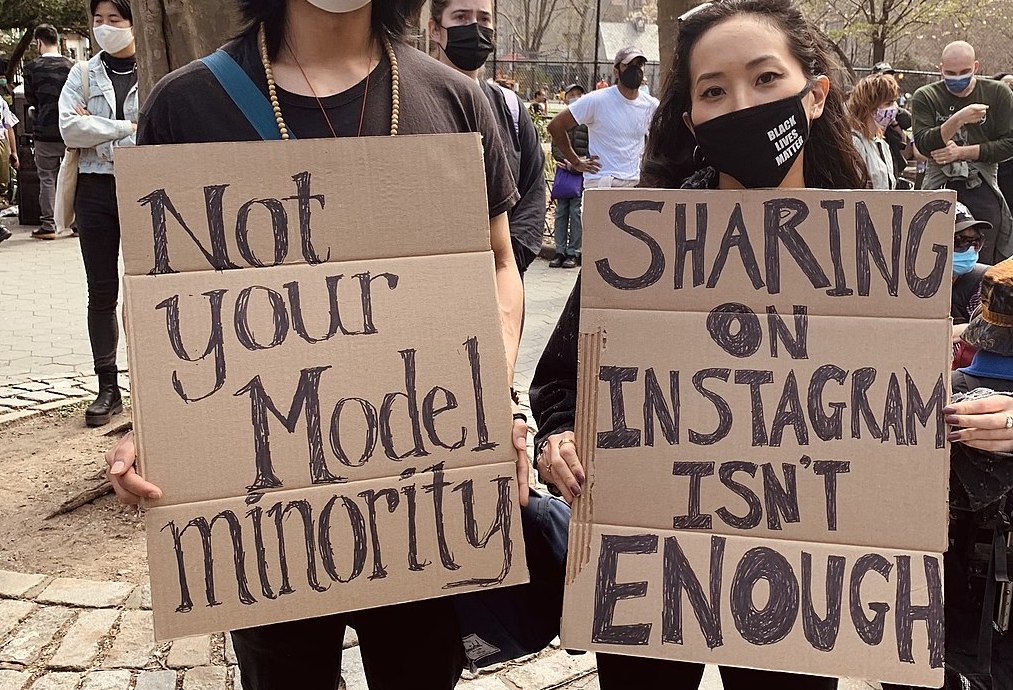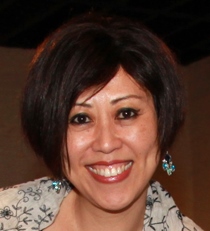'Model minority' perception complicates identities of white-Asian multiracial individuals, research finds

LAWRENCE — The term “model minority” was first coined by sociologists in the 1960s to describe Asian Americans as a group that has purportedly achieved greater success in the U.S. compared to other ethnic minorities. While the term is problematic on a number of levels, new research suggests that for white-Asian multiracial people, it adds even further complexity toward perception and self-identification.
 “In general, it is not a good idea to make assumptions about the experiences of Asian mixed-race people, as their identities and lived experiences are not monolithic,” said Kelly H. Chong, professor and chair of the Department of Sociology at the University of Kansas.
“In general, it is not a good idea to make assumptions about the experiences of Asian mixed-race people, as their identities and lived experiences are not monolithic,” said Kelly H. Chong, professor and chair of the Department of Sociology at the University of Kansas.
Her article titled “Interrogating the ‘White-Leaning’ Thesis of White-Asian Multiracials” argues for the need to advance studies on Asian mixed-race individuals to accurately capture the diversity of their identifications, political views and racialized experiences. It appears in Social Sciences.
Historically, Asian Americans have been positioned as a “racial middle” group in relation to white and Black Americans. In line with this perceived position, Asian-white multiracial people have also been characterized as being more white than Black-white multiracials, as well as “leaning white” in terms of self-identification, according to Chong.
“We have started to see more varied images of Asian Americans in the popular media, some moving beyond, and challenging, the ‘model minority’ image — Awkwafina comes to mind,” Chong said. “However, I feel that the model minority stereotype is persistent and hard to break. If it changes, it will not happen quickly.”
Chong, who co-wrote the article with Miri Song of the University of Kent, describes the key ways Asian Americans differ from other racialized groups in the U.S.
“Due to the ‘perpetual foreigner’ stereotype, Asian Americans have not only been discriminated against on the basis of race/skin color but ‘othered’ as foreigners who can never be completely assimilated. This results in a particular kind of social/cultural exclusion that is not sufficiently acknowledged. Due also in part to the model minority image, Asian Americans’ long-standing experiences of racism, racial violence and discrimination … have been widely dismissed and ignored,” she said.
The professor said how anti-Asian hate incidents that occurred during the COVID-19 pandemic and were exacerbated by the rhetoric of the Trump administration (“China virus,” “Kung-Flu,” etc.) brought more attention recently to this issue.
Her article explores the framing of Asian Americans and white-Asian multiracial individuals as a compliant, upwardly mobile “model minority” that is “suitable for absorption into the white racial majority through interracial marriage (as opposed to Blacks).” This capitalizes on the majority group’s assumptions about people of color.
“These premises in turn spring from the ‘straight line’ assimilation theory that Asian Americans as a whole want to ‘whiten’ and become assimilated into white middle-class society and culture if they could. Evidence, both from research and by writings from Asian mixed-race people themselves, shows neither is necessarily the case. Many report widespread experiences of discrimination and racism throughout their lives and do not necessarily incline more toward the white side of their ancestry,” Chong said, pointing to Olympic ski jumper Eileen Gu as a current example.
Chong has taught sociology at KU since 2005. She is the author of “Love Across Borders: Asian Americans, Race, and the Politics of Intermarriage and Family-Making” (Routledge) and “Deliverance and Submission: Evangelical Women and the Negotiation of Patriarchy in South Korea” (Harvard University Press). Her areas of scholarship include gender, immigration, religion, race and ethnicity.
She calls this new paper a “logical outgrowth” from her previous research on Asian American intermarriage and family-making.
“This was a topic I wanted to explore more fully after ‘Love Across Borders,’” she said. “I also have family members who identify as Asian mixed-race, so this was a topic of personal interest to me.”
Chong believes numerous lessons can be learned from “Interrogating the ‘White-Leaning’ Thesis of White-Asian Multiracials.”
The public, for instance, should not assume Asian mixed-race people “have it easy,” especially if relying only on socioeconomic indicators that suggest they “do well” in modern society.
“The experiences of Asian mixed-race people are highly varied, depending on many different factors such as how they look, their level of ethnic cultural exposure/connection, etc.,” Chong said. “In many cases, they feel the burden of being excluded not only from the white society but also from the Asian community for not being ‘Asian enough,’ as well as due to historical stigma of being mixed-race.”
She said that parents of Asian-mixed race children should also not make assumptions their kids “will or want to racially assimilate into whiteness … even if they ‘look white,’” she said.
“Regardless of which path the children end up taking — identifying as white, Asian, mixed-race or other — parents need to make sure to engage in conversations about race with them as early as possible.”
Top photo: The Rally for Asian American Women was held in New York’s Chinatown neighborhood in 2021. Wikimedia Commons Photo.